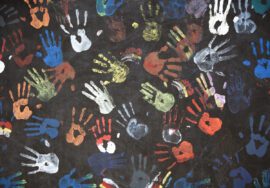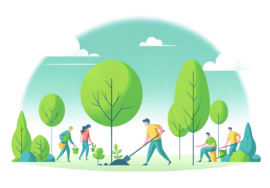
Shining Light on Shadows – Understanding Domestic Violence and Empowering Victims
The Silent Storm in Our Midst
Domestic violence, a lurking specter in the quiet corners of daily life, remains one of the most pervasive and least recognized human rights violations worldwide. It’s a complex, cloaked crisis affecting millions, irrespective of age, gender, or socioeconomic status. Yet, amidst these shadowed experiences, there is hope and light. This blog embarks on a journey to unravel the intricacies of domestic violence, spotlighting its forms, deciphering its signs, and most importantly, exploring the avenues of legal protection and support for its victims.
The Many Faces of Domestic Violence: More Than Just Physical Harm
Domestic violence is a multifaceted monster, manifesting in various forms that often overlap, creating a complex web of suffering. Here’s a closer look:
- Physical Abuse: The most visible form, characterized by physical harm or threat thereof.
- Emotional Abuse: Involves undermining an individual’s sense of self-worth through words and actions.
- Sexual Abuse: Encompasses any non-consensual sexual act or behavior towards the victim.
- Financial Abuse: Control over one’s access to financial resources, stripping away financial independence.
- Digital Abuse: Using technology to control, stalk, or harass a person.
These forms of violence are not always overt and can be insidious, slowly entwining into the fabric of daily life.
Understanding the Impact: A Glimpse into Domestic Violence Statistics in Canada
As we navigate the complexities of domestic violence, it’s crucial to ground our understanding in reality through data that not only reflects the severity of the issue but also guides our collective steps towards resolution. Here, we delve into the recent statistics from Canada, which illuminate both challenges and progress in our fight against domestic violence.
The Prevalence of Intimate Partner Violence
In 2022, Canada reported a significant number of intimate partner violence cases, with 117,093 victims recorded. Alarmingly, women and girls represented a staggering 78% of these victims. This statistic is not just a number—it’s a call to action, highlighting the urgent need for targeted support and intervention, particularly for young women aged 12 to 24, who experience this form of violence almost seven times more than their male counterparts (Statistics Canada).
A Rising Concern Among Vulnerable Populations
The data reveals a worrying trend of increasing intimate partner violence among seniors, with a 42% increase reported over recent years. This emphasizes the importance of extending our protective measures to include the elderly, who often may be overlooked in conversations about domestic abuse (Statistics Canada).
Regional Insights and the Need for Localized Responses
Manitoba, among other provinces, has shown notably high rates of family and intimate partner violence. This regional insight directs us to tailor our interventions and support mechanisms to meet the specific needs and challenges faced by communities within these areas (Statistics Canada).
Economic and Social Impacts
The ripple effects of domestic violence extend far into the socio-economic fabric of Canada. It’s estimated that Canadian employers lose approximately $77.9 million annually due to the direct and indirect impacts of intimate partner violence. This staggering figure highlights the broader societal and economic implications of domestic abuse, reinforcing the need for comprehensive workplace policies and support systems (Discreet Investigations).
Recognizing the Red Flags: Signs of Domestic Violence
Identifying domestic violence can be challenging, as it often thrives in secrecy. Here are some common signs:
- Unexplained injuries or frequent hospital visits.
- Withdrawal from social activities and isolation.
- Fearful, anxious, or submissive behavior around the partner.
- Sudden changes in personality or behavior.
- Overly controlling or monitoring actions from the partner.
Acknowledging these signs can be the first step towards intervention and support.
Legal Rights and Protections: Empowering Victims
Victims of domestic violence have legal rights and protections designed to offer safety and justice:
- Restraining Orders: Courts can issue orders to prevent abusers from contacting or approaching the victim.
- Criminal Charges: Acts of domestic violence are criminal offenses and can lead to the arrest and prosecution of the abuser.
- Child Protection: Laws are in place to protect children from exposure to domestic violence and provide them with a safe environment.
Statistically, legal interventions have shown a positive impact in providing victims with safety and holding perpetrators accountable.
Lighting the Path to a Violence-Free Future
Domestic violence, with its many faces and silent screams, requires our attentive ears and open hearts. Recognizing the signs, understanding legal rights, and accessing supportive networks like the Thompson Crisis Centre Inc. are pivotal steps in the journey towards healing and empowerment. Together, we can illuminate the path to a future where home is a haven of love, respect, and safety for all.
The Thompson Crisis Centre Inc., a renowned Women Crisis Centre in Manitoba, offers more than just emergency shelter; it’s a comprehensive support system for victims of domestic violence. Their services include:
- Emergency Shelter in Manitoba: Providing immediate safety and refuge for women and children fleeing violence.
- Interim Housing: Offering transitional housing to support women as they rebuild their lives free from abuse.
- Counseling and Support Services: Facilitating healing and recovery through professional counseling and support groups.
- Community Education and Advocacy: Raising awareness about domestic violence and advocating for policy changes to protect victims.
The centre’s commitment to creating a safe, supportive, and violence-free environment for women and their children in Manitoba is unwavering. With a focus on holistic care, the Thompson Crisis Centre Inc. addresses the immediate needs of victims while fostering long-term healing and independence.








